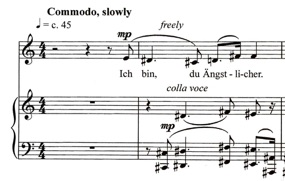[contextly_auto_sidebar]
 Here’s something I’ve mentioned before. But now it’s time to get serious. My reemergence as s composer is just two and a half months away, with an evening of my work on April 14, at the Strathmore Performing Arts Center, just outside Washington, DC.
Here’s something I’ve mentioned before. But now it’s time to get serious. My reemergence as s composer is just two and a half months away, with an evening of my work on April 14, at the Strathmore Performing Arts Center, just outside Washington, DC.
Details? They’ll come in future posts. But you can peek now at the concert program, and at Strathmore’s webpage for me.
For now, I’ll just say this. After so many years, doing so many things in classical music — being a critic, teaching; consulting, being a point man for classical music’s future — I’m back to making music. Which is what I love most. How did I get into this future of classical music work, after all, except by caring about music so much?
If you haven’t heard my work:
A song for soprano and piano, to a Rilke text (translation here)
Both these pieces will be on the concert, done by the same soprano and the same quartet.
One last thought…
To touch on a question some people might ask: How do my thoughts about the future of classical music affect my composing?
Not much at all. Art comes from inside. I write the music I want to write. Not shaped to fit anyone’s thoughts — mine included — about what classical music should be.
As it happens, my work is quite classical. True to my roots! (Though it’s not always as triadic as the pieces I’ve linked.)
And maybe the influence goes the other way — from my music to my ideas. If — as I sometimes do — I want to write with a rock & roll beat (you’ll hear that on my program), then of course I’ll think classical music should expand to allow that.
The musicians on those linked performances:
Marlissa Hudson, soprano, George Peachey, piano. Entcho Todorov, violin 1, Hiroko Naguchi, violin 2, Jonathan Dinklage, viola, Peter Sachon, cello.
I’ll tell you later why these pieces end the same way.
